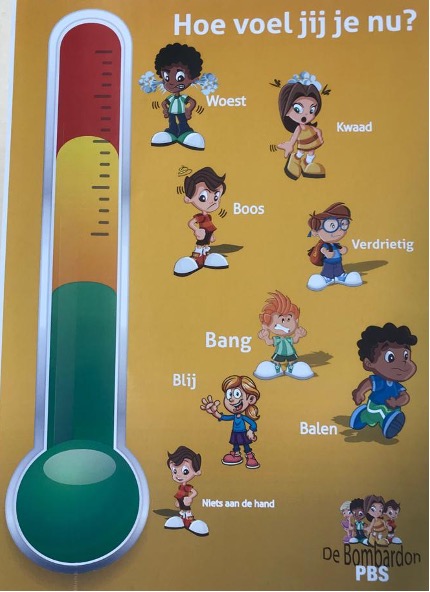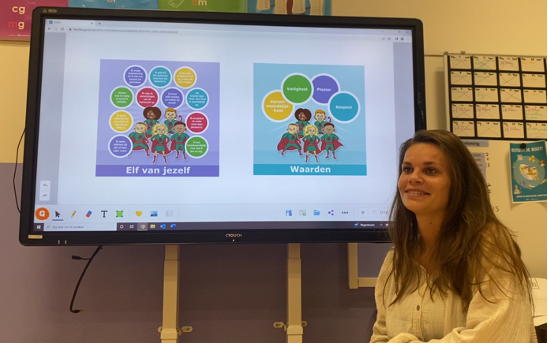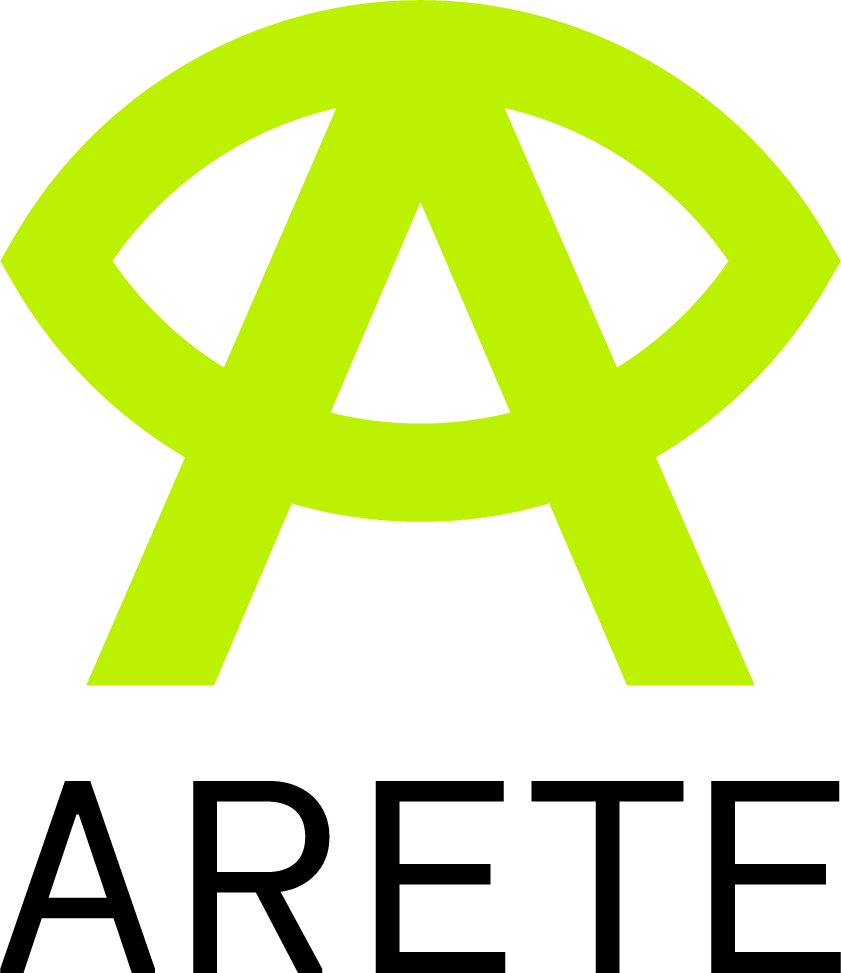Interviewing teachers about first round of Pilot 3’s study: PBIS lessons without AR
In the previous and first round of ARETE Project’s Pilot 3, multiple schools participated in using PBIS behavioural lessons without the use of Augmented Reality (non-AR condition). This first round served as a control condition in the study and allowed us to investigate whether we needed to tweak the current behavioural lessons and where we would need to implement the AR-application within each lesson.
We asked multiple teachers of different schools to share their views on PBIS and their experiences of participating in this study’s first round. More specifically we will cover:
- Their motivation to use PBIS;
- Their experiences with ARETE’s PBIS lessons (without AR);
- How they look at the future of PBIS.
- Their key take aways
Motivation to use PBIS
It is often interesting to hear why a school decides to implement PBIS at any given moment in time. It may be born from a school’s specific need or situation, as an interviewed healthcare school psychologist explains:
“Approximately 10 years ago, we desired a culture change in learning at our school, to increase pedagogics and create a better environment to raise children in. It was noticed among teachers that improvements could be made in communicating with and correcting of children. So a more safe and predictable school climate is important. Especially because our school offers special needs education, we know that our pupils desperately need this type of environment”.
Another school explains there was a certain lack of a school-wide pedagogic vision and philosophy. At the same time colleagues felt the need to have such a unified vision and therefore decided to implement PBIS.
Motivation to participate in ARETE’s PBIS study:
We were also curious about why the schools participated in the first round of the study. A school psychologist replied:
“To give an extra stimulus to the general philosophy of PBIS, and to refocus everyone’s priorities (all colleagues). And also secure the PBIS fundamentals, which may fade away to some degree over time.”
What did the teachers think about the content?
It is of importance to learn how the PBIS behavioural lessons (which were put together by the consortium of Pilot 3), was received by the teachers. A proper implementation of the behavioural lessons and ultimately the AR application in the second phase is in an important step to investigate. It requires a good pedagogic connection and understanding of the content by the pupils with the designed lessons.
Sometimes simple things or nuances in specific lessons can lead to insights in a specific class or social situation. A teacher beautifully points out how the lesson ‘greeting others’ already significantly impacted how she looks at the first interaction at the beginning of the day. An important moment of the day which immediately can set the stage for children and herself as a teacher. She explains it as follows:
Teacher:
“I had an extremely positive experience working with the ARETE behavioural lessons (Non-AR) so far, and was a real eye opener.

Lesson 1: ‘greeting others’, was most important to me, as greeting can be done in many different ways. And it worked in 2 ways:
- That I as a teacher make contact with the pupils;
- but secondly also making sure the pupils are noticing and acknowledging each other.
Some lessons I chose to combine in my class, but overall the lessons were incredibly valuable to both me and my pupils”.
The teacher continues:
“I enjoyed that the pupils showed significant progress while working with the lessons, completing tasks in subsequent shorter amounts of time. Next to that the pupils also became more organized.”
The testimonial above shows that the teacher is indeed able, through the PBIS lessons, to socially connect with the children in a better way. Also that the lessons seem to have a positive effect on children’s behavioural characteristics.
It is always interesting to see how different teachers with different kind of teaching styles, backgrounds, with different types of pupils, come to a certain approach with regards to teaching behavioural lessons. We asked the participating teachers what insights they had and things they learned, which could also be beneficial to other teachers. Several beautiful and personal stories and advice were shared:
- Acknowledge the pupil, give them a wink.
- Close the day asking the pupil, what they are proud of today. And what could go a little bit better.“
PBIS in schools goes further than just teaching children desired behaviour through behavioural lessons. This teacher illustrates that nicely. Besides beginning the day thoughtfully and open towards others, it also important to consistently ending the day in a positive manner. By doing this, a more positive atmosphere may be created in the classroom, rather than incidental implementation behavioural aspects. Giving them this positive attention results in that you really see the children grow mentally, as an interviewee explains.

Figure 1 - Thermometer daily mental state children and teacher. Each pupil can put their name tag somewhere on the thermometer to communicate his/her feelings and emotions at the start of the day.
The teacher also shows it is important to communicate when there is a day in which he/she is feeling towards the red spectrum of the thermometer. “It is good to show this to the pupils, when you are feeling a bit on edge. Also when I do something wrong, I explicitly say ‘I am sorry’. This shows and teaches the pupils to also be vulnerable and in turn it allows the pupils to be vulnerable too.”Q: What feedback do you have for other teachers?
“Important to always keep looking at yourself – and invite other teachers to look at your teaching and ask for feedback, to spot your own blind spots.”
Another point raised by the interviewees is that behavioural is constantly developing and that it is important to keep checking and validate the PBIS values and desired behaviours over time, to potentially adjust where needed, to the current school climate.
Future of PBIS
All teachers who were interviewed had many years of experience working with PBIS lessons. This made us curious about their opinion on where they would like see PBIS taken one step further.
With regard to the next phase of the study:
What stood out teachers thought ownership and self-reliance were important aspects for children to develop. During the interview the hope was expressed that with the use of the augmented reality application, these (key) personal aspects are developed.

Expectations of the PBIS study with AR
During the interview the hope was expressed that with the use of the augmented reality application, development of personal traits such as ownership and self reliance is stimulated, during participation of the PBIS behavioural lessons with AR. This may be accomplished by learning to be self initiating, for instance by using the application to check up on how certain (desired) behaviours work, rather than letting the initiative come from the teacher instead.
Another school comments with a similar note with the outspoken hope and expectation that the desired behavioural becomes something of the pupils themselves by becoming internalized throughout working with the application.
Next steps in PBIS
- “What we hope, is that this desired behaviour becomes something of the pupils themselves and that this serves as an agent to internalize desired behaviour. This is what I hope and also expect.”
- “Also specifically select applicants – to see whether they want to work with PBIS and if this suits the teaching style and philosophy of the applicant.“
Teachers also look outside of the school’s social environment and hope to improve involvement of parents and extend PBIS to local community centres. A teacher explains how having the same values and way of communicating with these children at different places, it may result in creating more clarity for the children by showing uniformly what “we” expect of the children.
What would like to see happen next, regarding PBIS? Either at the school or in the classroom?
- “I genuinely hope that we are able to extend our PBIS values to the local community centre. Children of this school often also go the community centre after school, and if we have the same values and way of communicating with these children at these 2 places, it would result in creating better expectations we have of the children.”
Working together with children is the main theme in teaching desired behaviour. This includes the many different social environments children encounter. However participation of the parents on this subjects is, on certain schools, more often absent than present. One’s home being the basis of a child’s development it is vital to “Also improve cooperation to work together with parents“, to increase the effectiveness of PBIS, as a school psychologist points out.
Key take aways
In conclusion we could sum up the main points of the interviewees as follows:
- Independence / self reliance and ownership, are important traits to develop through PBIS (with AR);
- Add a personal touch in teaching style: show vulnerability – to teach vulnerability;
- Work together with colleague teachers to keep each other sharp and up to date on PBIS values;
- Adjust /revise PBIS values and behaviours to current (and constantly) moving school climate. Instead manner of greeting others;
- Extension of PBIS beyond schools: Work together with different social environments, such as parents, social community (centres) etc.


